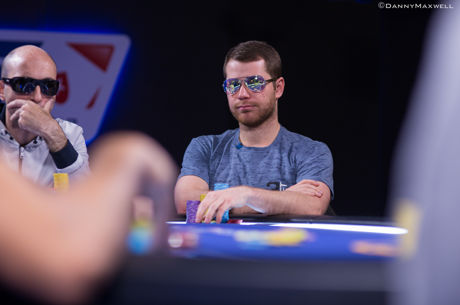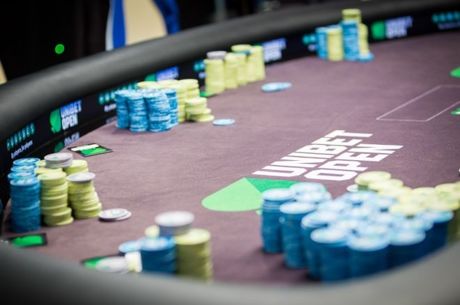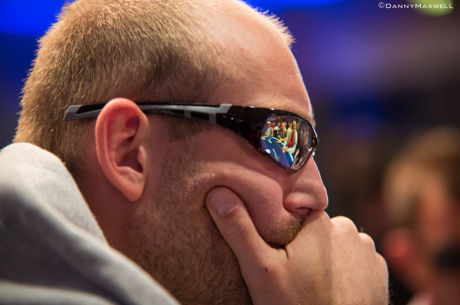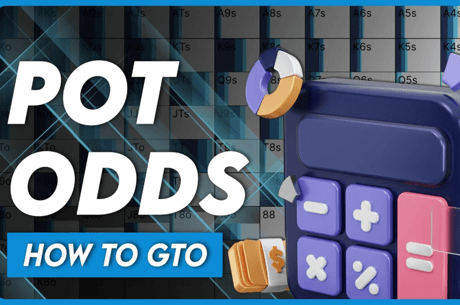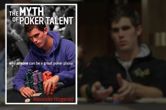Advice from Alex "Assassinato" Fitzgerald: "This Doesn't Work Live!"
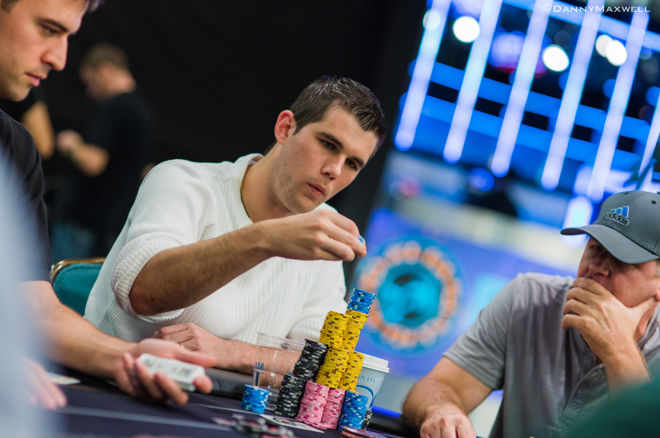
I hear this all the time when I teach poker: "Alex, why are you showing me all of these percentages? I play live poker all the time. I won't have a HUD there. How will I be able to use these?"
"Oh, that is where you're wrong my friend!" I tell them.
In reality, I use percentages as a form of shorthand. It would take me a long time to say, "All pairs, suited connectors, suited-gappers from 8x6x-suited and up, Broadways down to QxJx but not Jx10x..." and so on. Instead, I give rough percentages in my lessons. They are helpful because when you need a reference point you can play around with a hand range calculator.
Of course, giving percentages when referring to postflop actions is much more complex and not as easily understood, so generally I try to work in generalities to go along with each postflop number. For live poker, however, you can do just fine with percentages with regard to preflop play.
Recognizing the “20 Percenters”
For example, here is one very important number I always use — 20 percent, a figure that represents a special opening range. It's special for a number of reasons.
For one, it is very easy to prove a 20 percent opening range. When thinking of 20 percent of opening hands, that roughly means any Broadway hand, any suited ace, and any pair. That is not a very wide range. That doesn't even include the suited connectors or off-suited aces — if you add those in the person's opening history, then the range bloats more.
How do you prove someone is opening more than 20 percent of hands from a certain position? Well, the first thing you do is to put away Twitter, and you pay attention to the game.
Every time there is a showdown, that is a potential fountain of information. If you see someone raising with J♦8♦ from a certain position, that player is more likely to open with that hand a second time. Since that hand is beyond the 20 percent opening range, then we can safely conclude the player is opening more than 20 percent of hands.
Why is that significant? It's important to know this because a 20 percent opening range is notoriously difficult to defend. This has been known in online poker since 2007 when high-stakes regulars were punishing people with 15 percent opening ranges.
The reason for this is that no-limit hold'em gives you two cards to match with three. That is really hard to do with a 52-card deck. It would be less difficult to match the board if you used a range that only included hands that didn't need the board to improve, which means most of your combinations would be pocket pairs. However, this isn't an optimal strategy versus the field who doesn't know how to exploit wide opening ranges. Thus, if you're going to include junky suited aces and small pairs that miss many boards, then you have a real problem with someone who knows how to exploit that.
Playing Against the “20 Percenters”
If our opponent is playing more than 20 percent of hands, then on a majority of boards that player is going to miss more than 55 percent of the time. If the player folds some second and third pairs, our opponent is actually folding more than 60 percent of the time. This is significant, because many poker bets do not need to work this much.
Say you flat-call a raise out of the big blind, and the board comes K♦3♠2♠. You check to your opponent who is playing the presumed 20 percent opening range, and the player bets. You check-raise the size of a pot. This is normally considered a huge check-raise.
Well, that bet only needs to work 50 percent of the time. If your opponent calls or raises this bet with 10x10x or better, then that player is folding 62 percent of the time.
Matters only get worse if your opponent widens that opening range further. If the opening player decides to open off-suited aces, suited connectors down to 6x5x-suited, and suited-gappers down to 7x5x-suited, then our opponent does not have a pair or draw 57 percent of the time. That means the opener can jam any two and still be losing money.
Now undoubtedly some of you astute readers are saying, "But wait... what if the person has a checking range?"
Generally, people's checking ranges include a number of value hands, but they don't usually outright give up on a pot with nothing in their hand.
Why should they check with nothing here instead of continuation bet? After all, you just completed the big blind for a reduced price, so that makes you conceivably feel less committed. Then you checked the flop, which showed a lack of interest. You also are presumably flatting a wider range from the big blind due to that discounted price, so logically your hand range is missing the flop more often. Finally, you probably would've three-bet many of your pocket pairs, so that makes your range weaker still.
Fortunately, if your opponent does bet with nothing and also checks back some hands with showdown value, this makes the player's continuation betting ranges even weaker. Now your opponent can conceivably be bet-folding more than 65 percent of the time even when defending bottom pair.
I digress — these are not hard and fast rules. They are merely examples. But the truth remains that someone who opens as wide as with AxXx and suited-gappers is going to have a horrible time defending such hands postflop if you know how to barrel, check-raise, and donk lead.
It's even worse if you can three-bet the person while you're in position. Many players these days have decided that folding to a three-bet is unthinkable, so with all their garbage aces and suited-gappers they just flat out of position.
This is incredible. In the old days AxJx-offsuit was an instant fold to a middle position raise. Now, that's a three-bet value hand, because many AxXx combinations are flatting preflop and going broke postflop on ace-high boards.
Again, all of this starts with identifying your opponent's opening range. Thus, the 20 percent rule is very helpful.
Picking Up On Other Tendencies, Ranges
Additionally, it's also good to pay attention and see what someone is limping. If someone limps suited aces and suited gappers, then, logically, that player is less likely later to raise with those hands. If one hand category is in one range (i.e., the limping range, the raising range), it is less likely also to be in another. Therefore, if we see this kind of behavior we can mentally take this person off of our "20 percent open exploitable list."
Many students I teach this to eventually tell me, "You know, during a 12-hour session I miss little details all the time. If five people limp I can't remember who did it first, who did it second, who eventually raised… I'm not sure why. Maybe I just looked down at my phone or zoned out for a second, but either way it's difficult."
I completely understand this. Live tournaments and cash games can be grueling marathon affairs if they're good, and it can be hard to pay attention to every last detail of every hand.
Your best bet is to just try to remember who raised in any given situation. That makes it so in a given hand you only have to focus on one player. If you can get that detail, then usually you can figure out who limped.
If you have an awful attention span from all the PlayStation you're playing, then find a way to manufacture a better memory.
A method I employ is to use an application called Evernote on my phone. I watch every hand at a poker table, and then ask myself what I should write down afterward. I don't take notes for every hand I play or observe, but if at the end of the hand I find I can't take a note, I know I'm not paying good enough attention.
Evernote is great also because once you save a note on your cell phone it will link up to the cloud and save it there.
I used to take notes in an actual notebook, but I prefer this method now because it makes me look like I'm texting and not paying attention. Furthermore, for some reason strangers would grab my notebook and read through my notes all the time. I don't know on what planet this is considered acceptable behavior, but thankfully no one seems to grab my cell phone and start looking through my notes.
Conclusion
Don't be afraid to try your best and make mistakes. That's where all the real development happens. Make yourself pay attention to every hand, and if you find you're not paying attention ask yourself, "How do I think I'm going to win if I can't even take advantage of free information?"
Once you start focusing, look for these 20-percent-or-more openers to try and exploit. Record your experiments and try to figure out what doesn't work and what does.
Good luck to all of you.
Visit www.pokerheadrush.com to sign up for Alexander Fitzgerald's newsletter, and get articles like this delivered to your inbox every week! To get in touch with Alexander Fitzgerald you can write him at alex@pokerheadrush.com.

